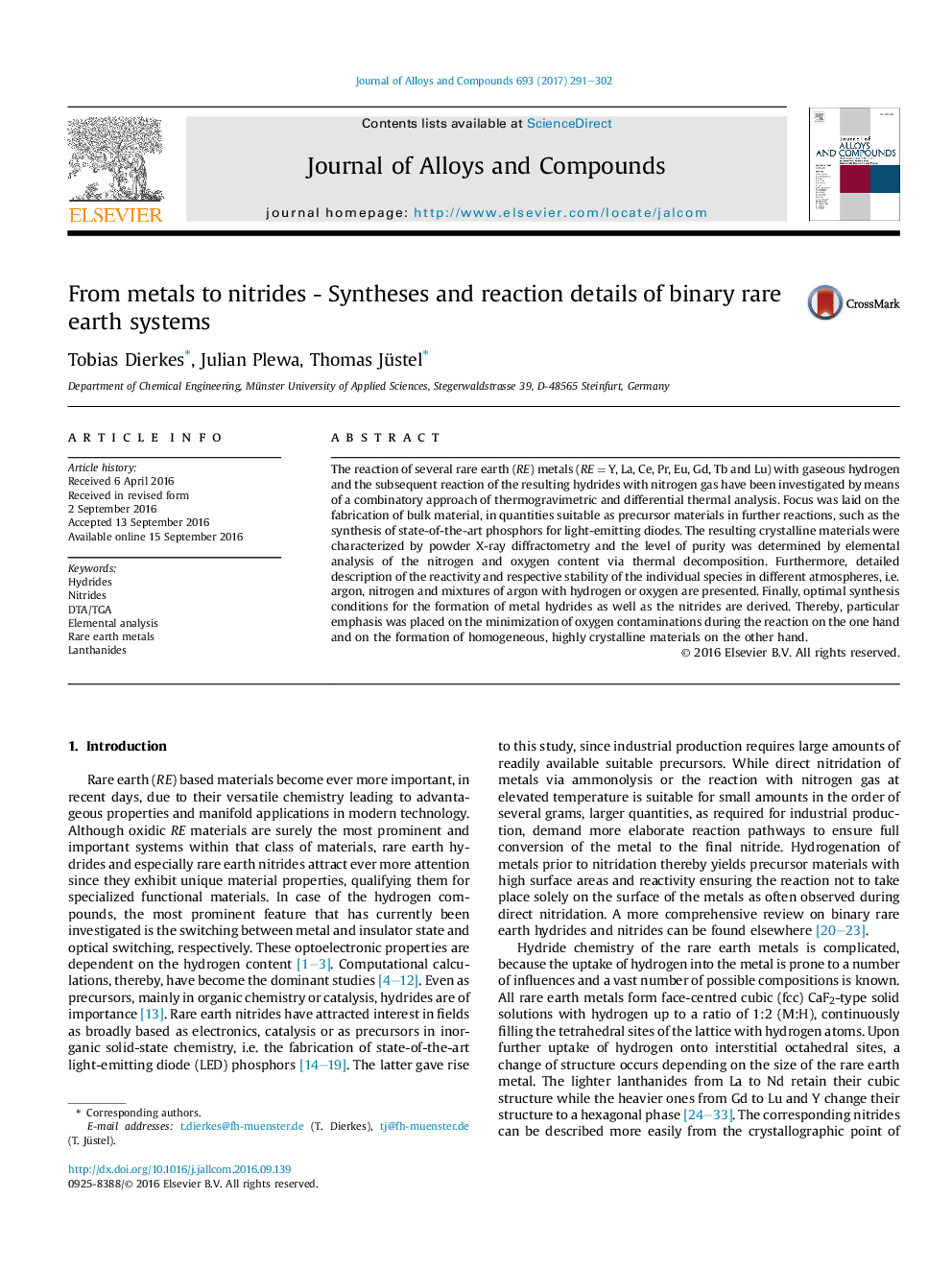| Article ID | Journal | Published Year | Pages | File Type |
|---|---|---|---|---|
| 5461009 | Journal of Alloys and Compounds | 2017 | 12 Pages |
â¢Hydrogenation conditions for the investigated metals varied over a wide range.â¢Consecutive nitridation of as-prepared metal hydrides proved to be less demanding.â¢Reaction mechanisms of the hydrogenation and nitridation were illuminated.â¢Single-phase hydrides and nitrides were synthesized via optimized synthesis routes.â¢Materials suffered from hydrogen/nitrogen deficiencies and minor oxygen impurities.
The reaction of several rare earth (RE) metals (REÂ =Â Y, La, Ce, Pr, Eu, Gd, Tb and Lu) with gaseous hydrogen and the subsequent reaction of the resulting hydrides with nitrogen gas have been investigated by means of a combinatory approach of thermogravimetric and differential thermal analysis. Focus was laid on the fabrication of bulk material, in quantities suitable as precursor materials in further reactions, such as the synthesis of state-of-the-art phosphors for light-emitting diodes. The resulting crystalline materials were characterized by powder X-ray diffractometry and the level of purity was determined by elemental analysis of the nitrogen and oxygen content via thermal decomposition. Furthermore, detailed description of the reactivity and respective stability of the individual species in different atmospheres, i.e. argon, nitrogen and mixtures of argon with hydrogen or oxygen are presented. Finally, optimal synthesis conditions for the formation of metal hydrides as well as the nitrides are derived. Thereby, particular emphasis was placed on the minimization of oxygen contaminations during the reaction on the one hand and on the formation of homogeneous, highly crystalline materials on the other hand.
Graphical abstractDownload high-res image (229KB)Download full-size image
